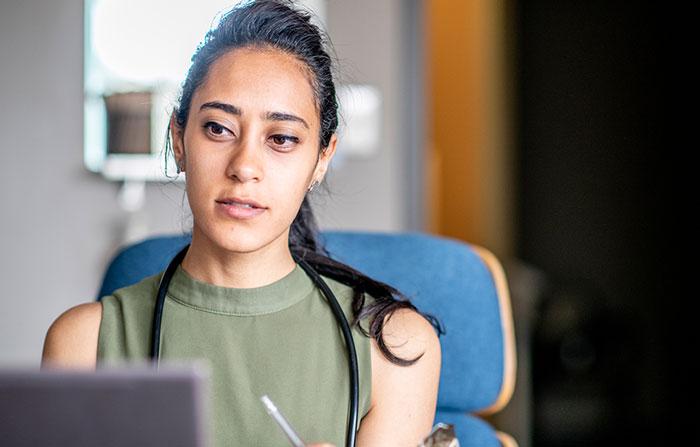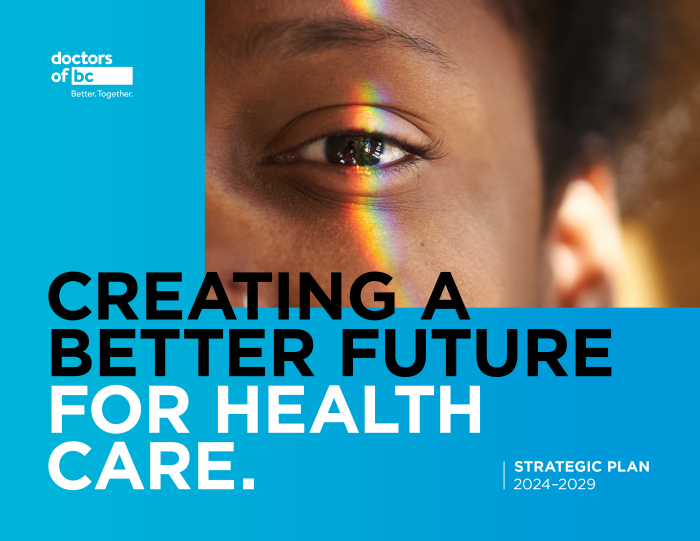- Managing your Practice
-
- Your Benefits
-

Introducing the ultimate Club MD experience
From work to play, and everything in between, we provide you with access to hundreds of deals from recognizable, best-in-class brands, elevating every facet of your life – from practice supports to entertainment, restaurants, electronics, travel, health and wellness, and more. Your Club MD membership ensures that these deals are exclusive to you, eliminating the need to search or negotiate.
Welcome to the ultimate Club MD experience. Your membership, your choices, your journey.
-
- Advocacy & Policy
-
- Collaboration
- News & Events
-

Stay Informed
Stay up to date with important information that impacts the profession and your practice. Doctors of BC provides a range of newsletters that target areas of interest to you.
Subscribe to the President's Letter
Subscribe to Newsletters
-
- About Us
-

Diversity, Gender, and Culture Change in Medicine
May 9, 2018
President's Blog
This past weekend I attended a #MeToo in medicine event, spearheaded by Dr. Gigi Osler. It is part of a wider initiative looking at diversity and inclusion, professionalism and physician wellness. And it seemed fitting to start with a group of women, especially with today’s focus on increasing society’s awareness of gender imbalances in all workplaces. In these recent conversations with women in their early stages of training and practice, I was appalled to learn how little has changed over the past 30 years.
 When I attended medical school, women were applying and being accepted in increasing numbers – but it was still very much a male dominated profession. Both my mother and aunt discouraged me from pursuing a medical career “because it’s such a hard life for a woman, dear.” Female trainees expected to face opposition and resistance, subtle and overt belittling of our capabilities – and we were not disappointed. My class was 30% women, but it wasn’t my male classmates who were the problem – it was some of our teachers and preceptors. One residency program even boasted about keeping women out of their specialty, and if the occasional woman was accepted they made her life miserable until she dropped out and changed programs by the end of first year. I was never personally subjected to overt sexual intimidation or assault, but several of my classmates were not so lucky. Particularly troubling were several classmates who, as patients, were treated by faculty members and experienced inappropriate boundary violations during their care. The double powerlessness of being both a patient and a trainee whose future career prospects could be negatively affected by the preceptor was an appalling situation.
When I attended medical school, women were applying and being accepted in increasing numbers – but it was still very much a male dominated profession. Both my mother and aunt discouraged me from pursuing a medical career “because it’s such a hard life for a woman, dear.” Female trainees expected to face opposition and resistance, subtle and overt belittling of our capabilities – and we were not disappointed. My class was 30% women, but it wasn’t my male classmates who were the problem – it was some of our teachers and preceptors. One residency program even boasted about keeping women out of their specialty, and if the occasional woman was accepted they made her life miserable until she dropped out and changed programs by the end of first year. I was never personally subjected to overt sexual intimidation or assault, but several of my classmates were not so lucky. Particularly troubling were several classmates who, as patients, were treated by faculty members and experienced inappropriate boundary violations during their care. The double powerlessness of being both a patient and a trainee whose future career prospects could be negatively affected by the preceptor was an appalling situation.
Overlying this particular issue was the culture of shame-based teaching and the slavery of scutwork, long hours and no sleep. As far as the work goes, males and females were both abused. Medical training was a trial by fire, a long established tradition of surviving a grueling apprenticeship before being admitted to the full privileges of the profession. Most of the men and women who taught me were decent people and decent teachers. The way we worked was the culture of medicine at the time, and many of us in subsequent years have worked hard to change that. But there were bad apples, just as there are today. And I am saddened that despite women now composing a significant percentage of the medical workforce, there seems to be even more of these situations occurring. Or perhaps it is just that such experiences were so deeply hidden in the past, many of us were unaware of the extent of the problem. The courage of the individuals in medicine who have articulated their #MeToo stories highlights a situation we cannot ignore.
We learn in medical school about boundaries and the power imbalance between physicians and patients, and physicians and learners. There are academic standards defining appropriate interactions between students and teachers, and yet we struggle. It is time to ask ourselves difficult questions about the culture in which we work. In what reality is sexual harassment or bullying ever appropriate? Why in Canada’s diverse multicultural society do physicians of colour face harassment and prejudice? What about less visible diversity such as the LGBTQ community? How does our treatment of each other reflect our professional standards, and what are the implications for physician wellness?
Medicine is a wonderful profession, and we must ensure that professional behaviour towards each other is the standard in all interactions – and at all stages of training. To address these issues we must all be part of the conversation – all genders, ethnicities, sexual orientations and everyone that is part of our broad and diverse profession. The culture must change, and we are the only ones who can do it. The time is now.




